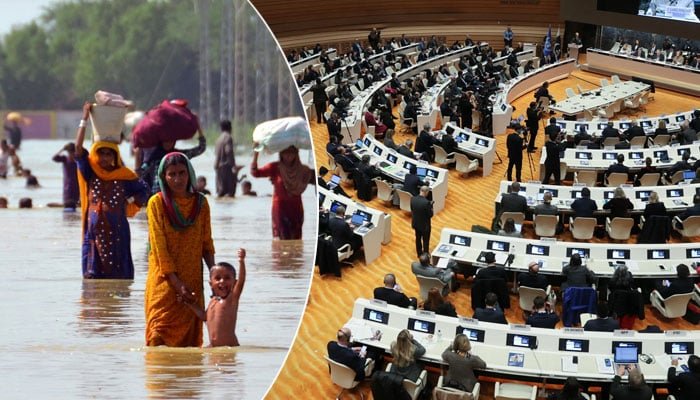In a recent development, international donors have pledged a substantial sum of 10.9 billion dollars for areas affected by floods in Pakistan. A detailed analysis of these commitments reveals that approximately 3.4 billion dollars will be available for Pakistan’s infrastructure projects in the form of cash funding. Among the commitments made in Geneva, a significant portion is earmarked for financing in the form of grants, facilitation of oil, and reutilization of previously acquired funds.
The breakdown of the 10.9 billion dollars pledged at the Geneva conference sheds light on the financial arrangements. The Islamic Development Bank has committed 4.2 billion dollars through the Asian Infrastructure Investment Bank (AIIB) to aid in grants and three years of oil financing. Additionally, the remaining 6.7 billion dollars, part of the Saudi Fund for Development, will contribute 1 billion dollars for oil facilities that are set to conclude by December 2023. Furthermore, countries represented by the Paris Club have committed 1.2 billion dollars. Consequently, a balance of 4.5 billion dollars remains.
Government officials have stated that bilateral and multilateral lenders have recommended new applications for the utilization of 1.127 billion dollars in flood-affected areas. Out of this amount, 229 million dollars are from the World Bank, 78 million dollars from the Asian Development Bank, and 750 million dollars from the Infrastructure Investment Bank. Pakistan has approved 13 development schemes, with 6 projects allocated for Sindh, 5 for Balochistan, and 1 each for Punjab and Khyber Pakhtunkhwa. However, progress in Balochistan’s projects is disappointingly slow due to the distribution of promised funds. Pakistan has only received financing from bilateral and multilateral lenders for 1.48 billion dollars for projects and facilitation of oil through grants and financing. The funding for these projects remains considerably insufficient, with only 780 million dollars available until September 2023.
To expedite the implementation of these development projects, the Ministry of Planning, Development, and Special Initiatives has decided to accelerate the pace of progress. A second meeting of the Federal Steering Committee for Foreign Aid Framework (FAF) was held under the federal government’s initiative. The Federal Steering Committee for 4 A’s, established in 2022 for projects in flood-affected areas, received detailed briefings from the Ministry of Environment and the AADP. Provincial representatives from all four provinces, including Azad Jammu and Kashmir and Gilgit-Baltistan, were present at the meeting. It was disclosed that a special board for the 4 A’s is in its final stages, to be placed under the Ministry of Planning. This real-time monitoring mechanism will ensure transparency and provide information to donors and development partners.
The provinces have been instructed to compile lists of projects, and the Monitoring and Evaluation Framework has been strengthened for community and partner participation through equity estimates. After the estimation of post-loss requirements in October 2022, shared by the Government of Pakistan and relief agencies including the World Bank, Asian Development Bank, European Bank, and the United Nations, the collective loss due to natural disaster was calculated at a staggering 30 billion dollars. The situation, although challenging, reflects a coordinated effort between Pakistan and international partners to rebuild and uplift the flood-affected regions, promising a brighter future amidst adversity.



